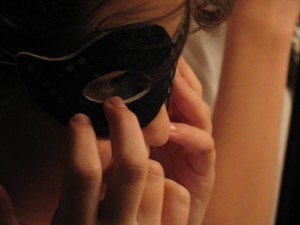As the lights came back on in the theater, I sat in my seat, trying to absorb everything that had played on the screen over the last 40 minutes. The camera angles, the plot (or lack thereof), the Spanish words combined with English narration…it was all too much. As I walked out of the movie theater, I felt a sense of disappointment. Why had I sat through that? I had just seen my first “art film,” and I had been completely unprepared for it.
“Con Viento en el Pelo,” (or “Wind in Our Hair”), inspired by the writings of Julio Cortázar, gives the audience an exclusive viewing of life as seen through the eyes of four young girls living in Buenos Aires, Argentina who have yet to discover the outside world that surrounds their “kingdom.” Director Lynne Sachs, an experimental filmmaker born in Memphis, Tennessee, is able to transform the girls’ ordinary lives into something a bit more extraordinary. Though character development is slim, we learn the most about Leticia, a physically disabled, yet confident girl about which the others note, “leads us.” Every day the girls adorn their bodies with colorful swatches of cloth, gaudy masks, and parts of discarded Halloween costumes and anxiously wait for the train to pass by to entertain the boarded passengers with their crazy outfits. They call themselves “statues,” which is a perfect description of their daily show. The train is the girls’ only reminder that there is a world beyond their backyard. The train brings people, noise, and a boy, Ariel, who soon befriends them. He becomes their only concrete form of communication with the outside world by writing them notes and throwing them out the train’s window.
The notes, written in Spanish, are only one of the numerous mediums Sachs employs to convey the movie’s meaning. Spanish dialogue and writing, English subtitles and narration, all contribute to the melting pot of cultural differences expressed in the film. The narrator has a magnificent voice for translating the girls’ rapid chatter. She can turn three minutes of undistinguishable murmurs to one clear line of understanding. In one scene, a girl chants, “Piedra, papel, tijeras”; yet, until the narrator informs the audience that this is simply the game “rock, paper, scissors,” the audience is lost.
Beyond the narrator’s voice, the movie contains few other vocals. This movie consists of one song: “Un Día,” meaning “one day.” Do not walk into this movie expecting a beautiful original score. The rest of the “soundtrack” is simply everyday sounds: birds chirping, dogs barking, kids laughing, the train chugging. At points, this lack of music works: it forces the audience to focus on the natural sounds of daily life. Other times it seems to leave an empty hole in the movie experience. Occasionally, you will hear a reporter on the radio announcing a farmers’ strike. But the girls pay no attention to it. Footage of demonstrations, reports of grain shortage, angry farmers yelling- these sounds barely break into the girls’ laughter as they sit at the table eating a variety of breads, which symbolizes a luxury that the girls take for granted. Only once in the movie does the narrator address the poverty in the surrounding neighborhoods. But the moment is brief, and soon the girls resume whatever game they had been playing before the outside world had intruded. This stark contrast reinforces the innocence of the four girls. The film does a nice job of juxtaposing the girls’ secluded “kingdom” to the chaos of the real world through visuals.
Every camera shot, though oftentimes seemingly random, has been crafted with great care by Sachs. The shots are often close-up, focusing on something that Sachs wants to be sure you notice. For example, you rarely ever see a full, detailed view of the girls. The frame might focus on a girl’s mouth if she is talking, her profile if she posing, her shoes if she is running. But at times, the camera angles are dizzying, forcing the viewer to try to decipher what is happening in the shot, instead of reading the subtitles flashing along the bottom of the screen. Wide-angle shots are rare: the backyard is one of the images that is shown from far away, which effectively relays to the audience how big the backyard, or their “kingdom,” appears to be to the four growing girls.
As I write this review, I realize I liked the film more than I previously thought. I understand and appreciate the careful decisions that went into every frame. Thought provoking and creative, “Wind in Our Hair” took me on a journey that opened my eyes to a life very different from my own. It showed me a genre of filmmaking that I had never been exposed to before, for which I am grateful. However, at times, the film ceased to hold my interest. Without the structure of a typical movie, I was caught off-guard by the lack of any real plot, problem, or resolution. What it lacked in plot, though, it made up for in originality and heart. Overall, the film did not fulfill my expectations and left me rather bewildered; however, from an artistic point of view, this film was satisfying to the eyes and the mind. “Wind of Our Hair” is a refreshing antidote to a movie industry dominated by special effects. If you go into the theater craving an action-packed “Clash of the Titans,” you should probably skip this movie. However, if you are seeking a movie that is artistic and stimulates the mind, “Wind in Our Hair” may be the perfect choice.
by Christine Dickason
Memphis, Tennessee

